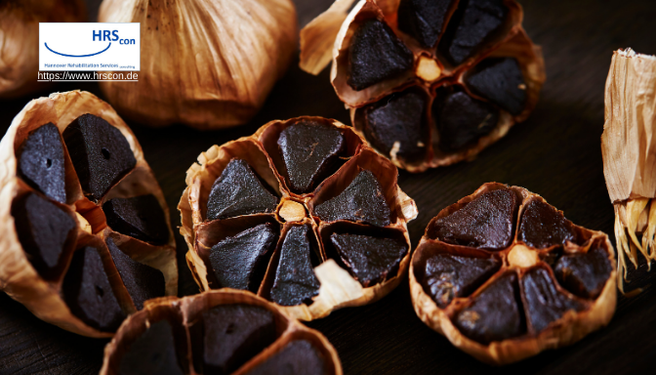Camel urine might not be the first thing you think of when it comes to medical breakthroughs, but recent research is putting this ancient remedy in a new light. A systematic review highlights the potent antimicrobial properties of camel urine, with promising applications in combating bacteria, viruses, and fungi. Could this surprising biofluid be the key to tackling antibiotic resistance and drug-resistant infections?
Ancient Remedy Meets Modern Science
For centuries, camel urine has been used in traditional medicine across the Arabian Peninsula and Africa. It has been credited with healing infections, treating burns, and even improving hair health. However, modern science has now stepped in to investigate its true potential.
Findings: Camel urine contains bioactive compounds that show significant efficacy against drug-resistant bacteria, fungi, and even viruses like the Middle East Respiratory Syndrome Coronavirus (MERS-CoV).
Camel Urine: A Powerful Antimicrobial Agent
The review highlights camel urine’s potential to inhibit the growth of pathogens responsible for serious infections. Here’s what the research revealed:
| Pathogen Type | Examples | Effectiveness |
|---|---|---|
| Bacteria | E. coli, Staphylococcus aureus, Salmonella spp. | Strong antibacterial activity, including against drug-resistant strains. |
| Viruses | MERS-CoV, H1N1 | Reduced virus replication by up to 99.9% in lab studies. |
| Fungi | Candida albicans, Aspergillus niger | Effective against fungal infections in humans and plants. |
How Does It Work?
The antimicrobial effects of camel urine are rooted in its unique chemical makeup. Scientists have discovered several mechanisms by which it combats harmful microbes, making it an intriguing subject for further medical and pharmaceutical research.
1. Disruption of Microbial Cell Walls
Camel urine contains bioactive compounds like phenols and salicylic acid, which can penetrate and damage the protective outer layers of bacteria and fungi. This process, known as cell wall disruption, leads to the leakage of essential nutrients from the microbes, effectively killing them. For example:
- Studies have shown that Escherichia coli and Staphylococcus aureus become vulnerable when their cell walls are compromised, making them more susceptible to other treatments.
2. Inhibition of Enzymatic Functions
Many pathogens rely on specific enzymes to replicate and survive. Camel urine contains compounds such as cinnamic acid and azelaic acid, which inhibit these enzymes. Without functional enzymes:
- Bacteria cannot multiply.
- Viruses struggle to hijack host cells to replicate.
- Fungi experience reduced mycelial growth, limiting their spread.
3. Increased Permeability of Microbial Membranes
Camel urine is rich in minerals like zinc and copper, which destabilize microbial membranes. By increasing the permeability of these membranes, the compounds allow water and other molecules to flood the microbes, effectively destroying them.
- Zinc, in particular, has been shown to block bacterial protein synthesis and disrupt viral RNA replication.
4. Damage to Genetic Material
Research indicates that camel urine can damage the DNA and RNA of microbes. For viruses, this means inhibiting their ability to reproduce within host cells.
- A study on the Middle East Respiratory Syndrome Coronavirus (MERS-CoV) demonstrated that camel urine reduced viral replication by over 99.9% in lab settings.
5. Synergistic Effects with Other Compounds
Camel urine is often combined with camel milk in traditional remedies, a combination that enhances its antimicrobial effects. Milk contains lactoferrin and other proteins that inhibit microbial growth, while the urine’s bioactive compounds intensify the effect. This synergy is particularly effective against bacteria and fungi.
6. Immune System Modulation
Camel urine doesn’t just kill microbes—it also boosts the body’s natural defenses. Its bioactive molecules stimulate the production of immune cells, enabling the body to fight infections more effectively.
- For instance, patients with chronic infections like Candida albicans have shown improved outcomes when treated with camel urine, thanks to its dual action of microbial destruction and immune activation.
A Glimpse at the Data
The systematic review examined 19 studies and compiled results from diverse pathogens. Here’s a summary of its key findings:
| Microorganism | Inhibition Zone (mm) | Other Observations |
|---|---|---|
| Staphylococcus aureus (MRSA) | 30 (fresh urine), 50 (treated urine) | Highly effective against antibiotic-resistant strains. |
| Escherichia coli (E. coli) | 15–32 | Potent activity, including multidrug-resistant strains. |
| Candida albicans | 20–44 | Comparable to commercial antifungal drugs. |
| MERS-CoV | 99.9% viral reduction | Promising antiviral potential against coronaviruses. |
Beyond Humans: Agricultural Potential
Camel urine’s benefits extend to agriculture as well. It has been shown to inhibit fungal diseases in crops such as tomatoes and beans. For instance:
- Aspergillus flavus: A leading cause of crop spoilage, saw a significant reduction in spore production.
- Fusarium oxysporum: The culprit behind root rot in many plants was effectively inhibited by camel urine treatments.
The Science of Bioactive Compounds
Camel urine contains over 70 bioactive compounds, including:
- Salicylic Acid: Known for its anti-inflammatory and antimicrobial properties.
- Phenolic Acids: Effective against bacteria and fungi.
- Zinc and Copper Ions: Play crucial roles in disrupting microbial membranes and enzymes.
These compounds not only fight infections but also promote wound healing, making camel urine a multi-functional remedy.
The Promise and the Challenges
While the findings are groundbreaking, there are challenges to overcome before camel urine can be widely adopted in modern medicine:
- Standardization: The concentration of bioactive compounds varies based on the camel’s diet, age, and hydration levels.
- Cultural Acceptance: Despite its efficacy, the use of camel urine may face resistance in certain regions due to cultural perceptions.
- Further Research: More clinical trials are needed to confirm its safety and effectiveness in humans.
Potential Applications in Modern Medicine
With its potent antimicrobial properties, camel urine could revolutionize healthcare:
- Fighting Antibiotic Resistance: As drug-resistant bacteria continue to pose a global threat, camel urine’s natural compounds offer a promising alternative.
- Skin and Wound Treatments: Its ability to heal burns and infections could make it a valuable ingredient in topical creams.
- Antiviral Therapies: The findings on MERS-CoV and H1N1 suggest it could be used in antiviral drugs.
Tips for Harnessing Camel Urine’s Potential
For those intrigued by its benefits, researchers recommend:
- Using treated or concentrated urine for maximum efficacy.
- Combining it with camel milk for enhanced antibacterial activity.
- Conducting further studies to optimize its use in pharmaceutical applications.
The Road Ahead
Camel urine is no longer just an ancient remedy; it’s a scientifically validated antimicrobial powerhouse. As researchers continue to explore its potential, this unlikely elixir could transform medicine, agriculture, and beyond.




